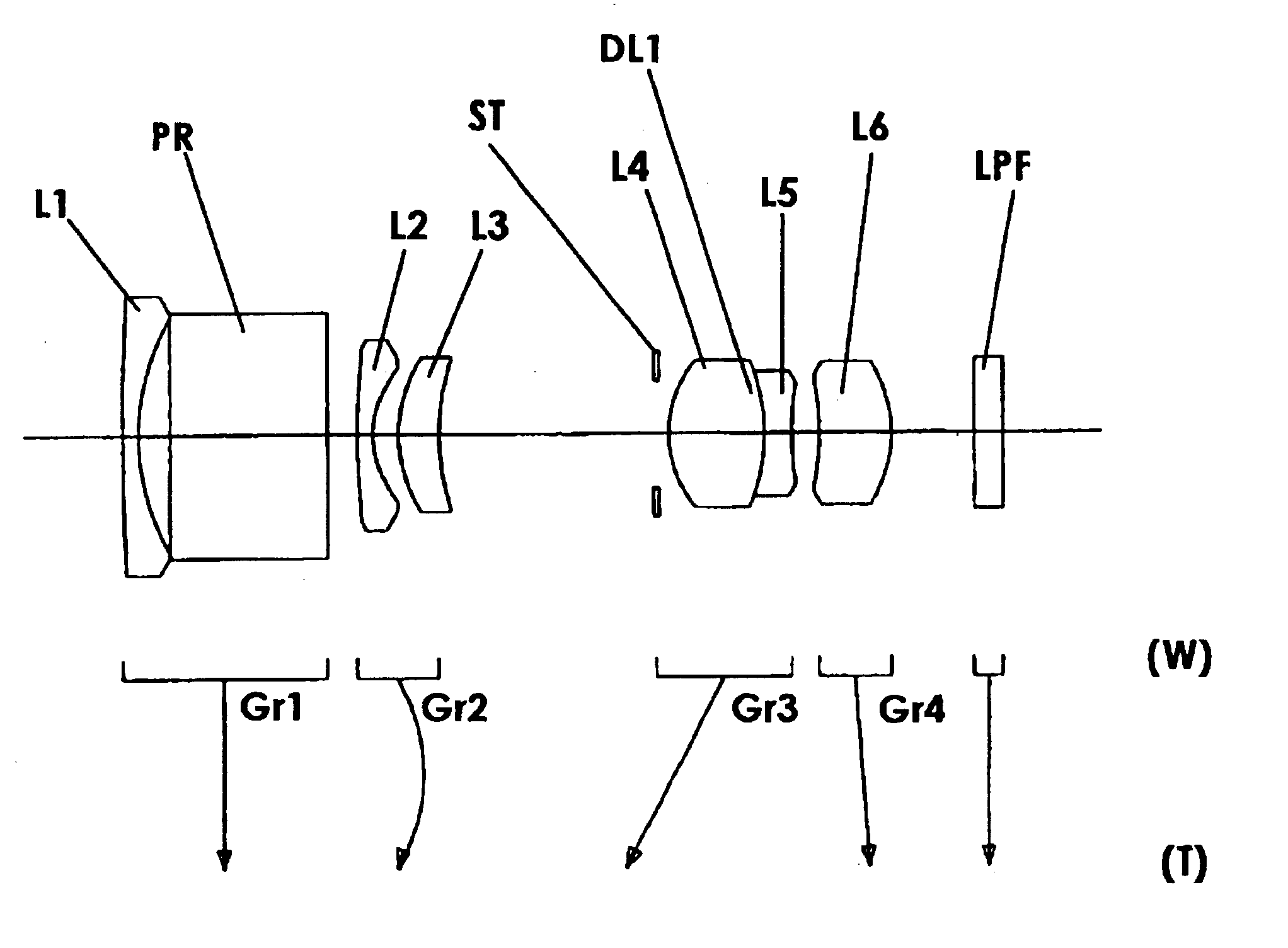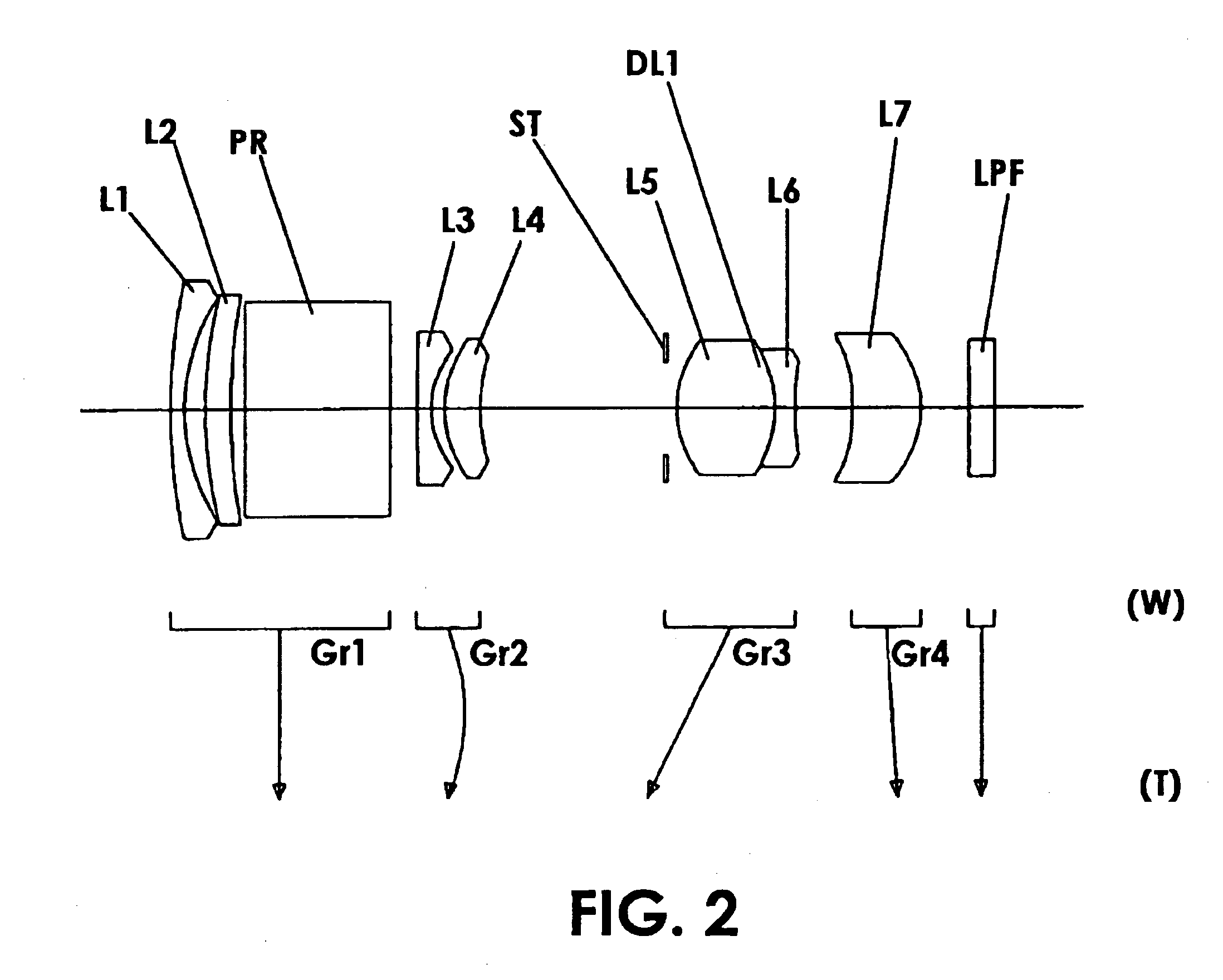Imaging device and digital camera using the imaging device
a technology of imaging device and lens barrel, which is applied in the direction of printers, instruments, cameras, etc., can solve the problems of insufficient security of peripheral light, inability to secure the optical performance of image sensors, and difficulty in setting the pupil of the microlens, so as to reduce the cost of imaging devices, improve the degree of freedom of lens barrel structure, and thin optical system
- Summary
- Abstract
- Description
- Claims
- Application Information
AI Technical Summary
Benefits of technology
Problems solved by technology
Method used
Image
Examples
example 2
EXAMPLE 3
example 4
EXAMPLE 5
FIGS. 6A to 6I through 10A to 10I which are graphic representations of aberrations of the first to the fifth examples show aberrations of the zoom lens systems of the examples in in-focus state at infinity. In these figures, (W), (M) and (T) show aberrations (from the left, spherical aberration, sine condition, astigmatism and distortion; Y'(mm) is the maximum image height [corresponding to the distance from the optical axis] on the image sensor) in the shortest focal length condition, in the middle focal length condition and in the longest focal length condition, respectively. In the graphic representations of spherical aberration, the solid line (d) shows spherical aberration to the d-line, the chain line (g) shows spherical aberration to the g-line, the chain double-dashed line (c) shows spherical aberration to the c-line, and the broken line (SC) shows sine condition. In the graphic representations of astigmatism, the broken line (DM) shows astigmatism on the meridional...
PUM
 Login to View More
Login to View More Abstract
Description
Claims
Application Information
 Login to View More
Login to View More - R&D
- Intellectual Property
- Life Sciences
- Materials
- Tech Scout
- Unparalleled Data Quality
- Higher Quality Content
- 60% Fewer Hallucinations
Browse by: Latest US Patents, China's latest patents, Technical Efficacy Thesaurus, Application Domain, Technology Topic, Popular Technical Reports.
© 2025 PatSnap. All rights reserved.Legal|Privacy policy|Modern Slavery Act Transparency Statement|Sitemap|About US| Contact US: help@patsnap.com



